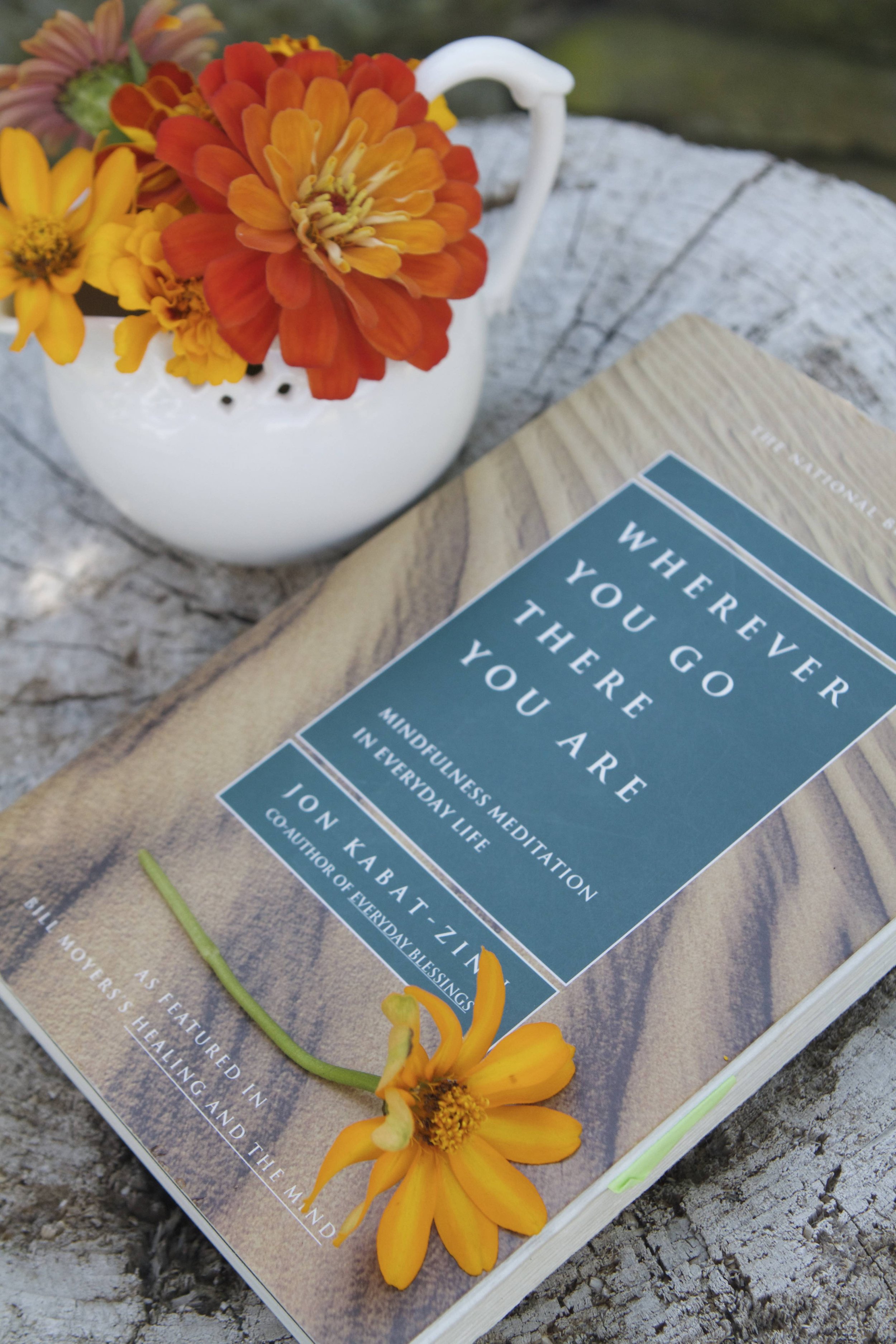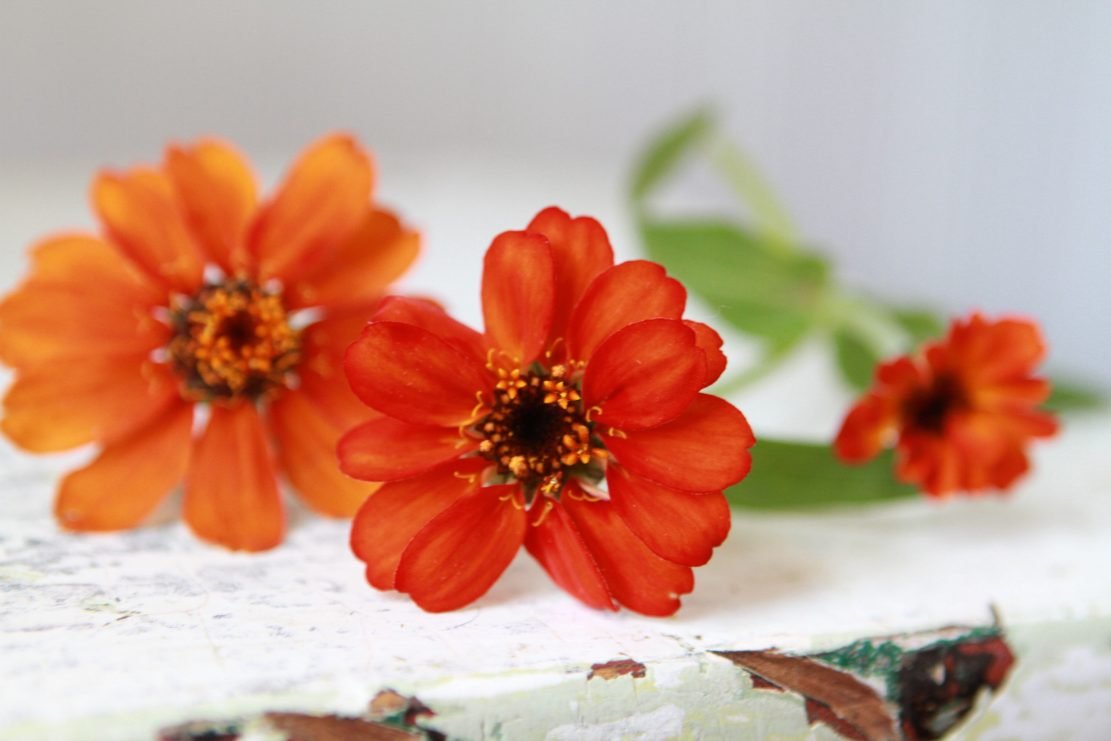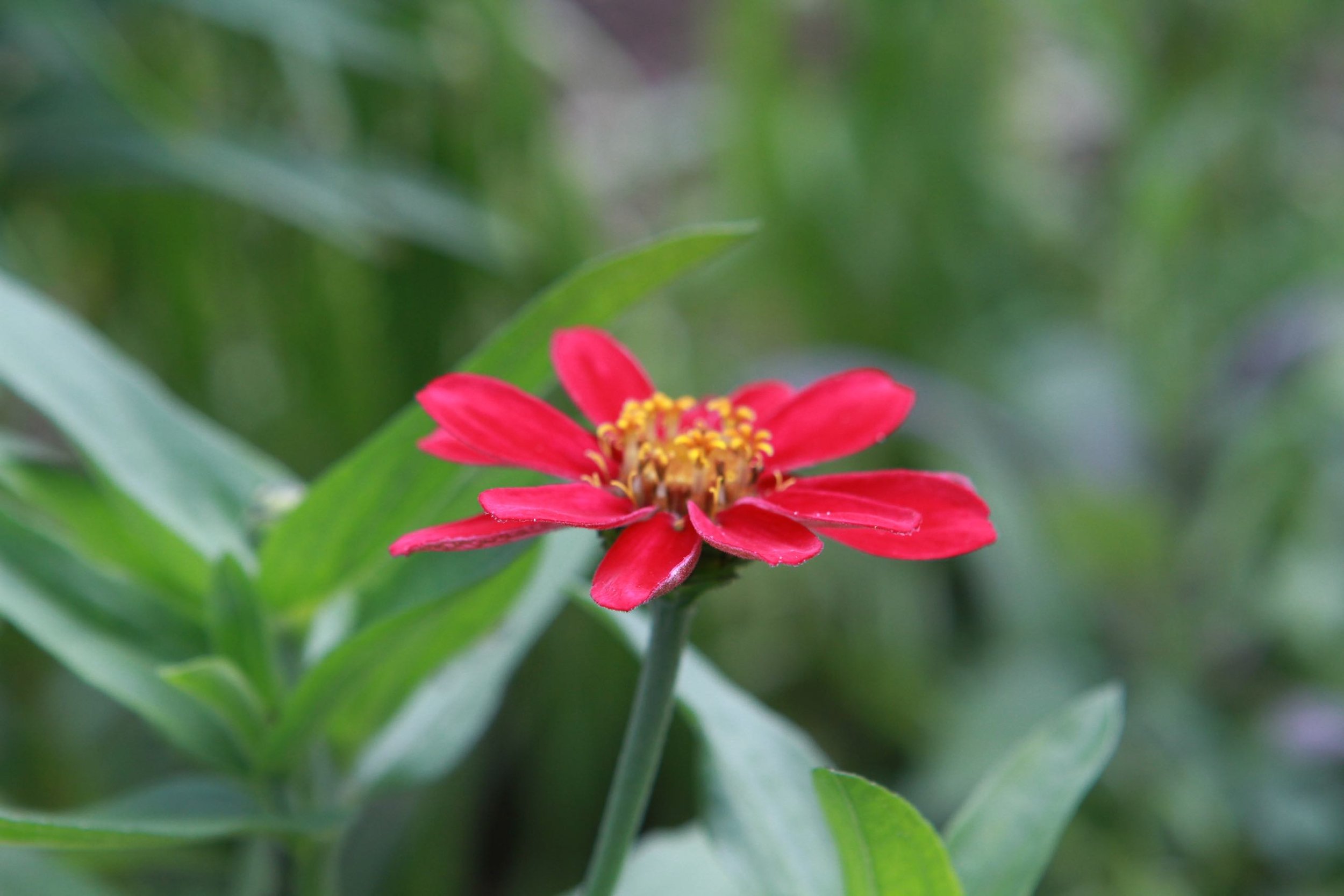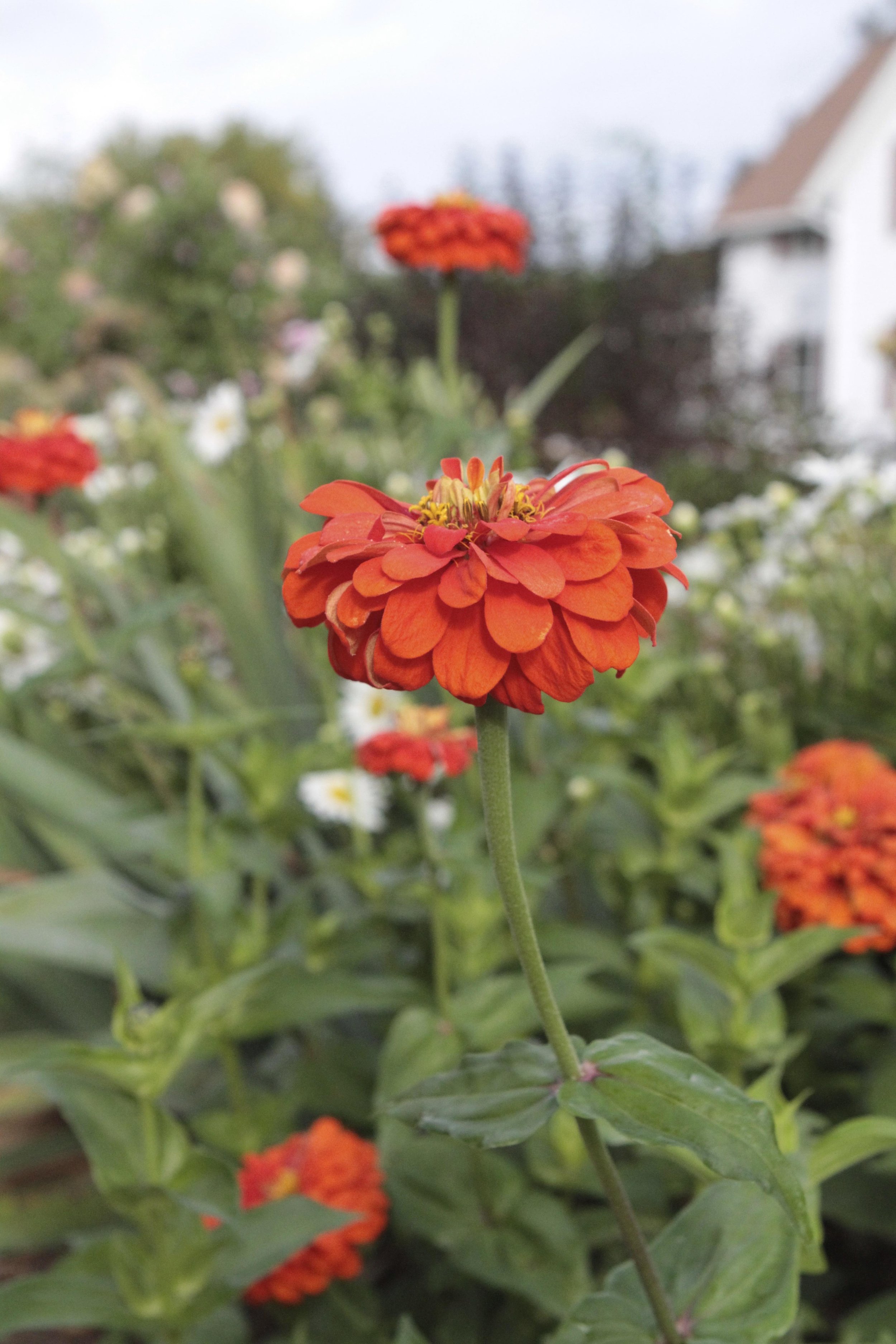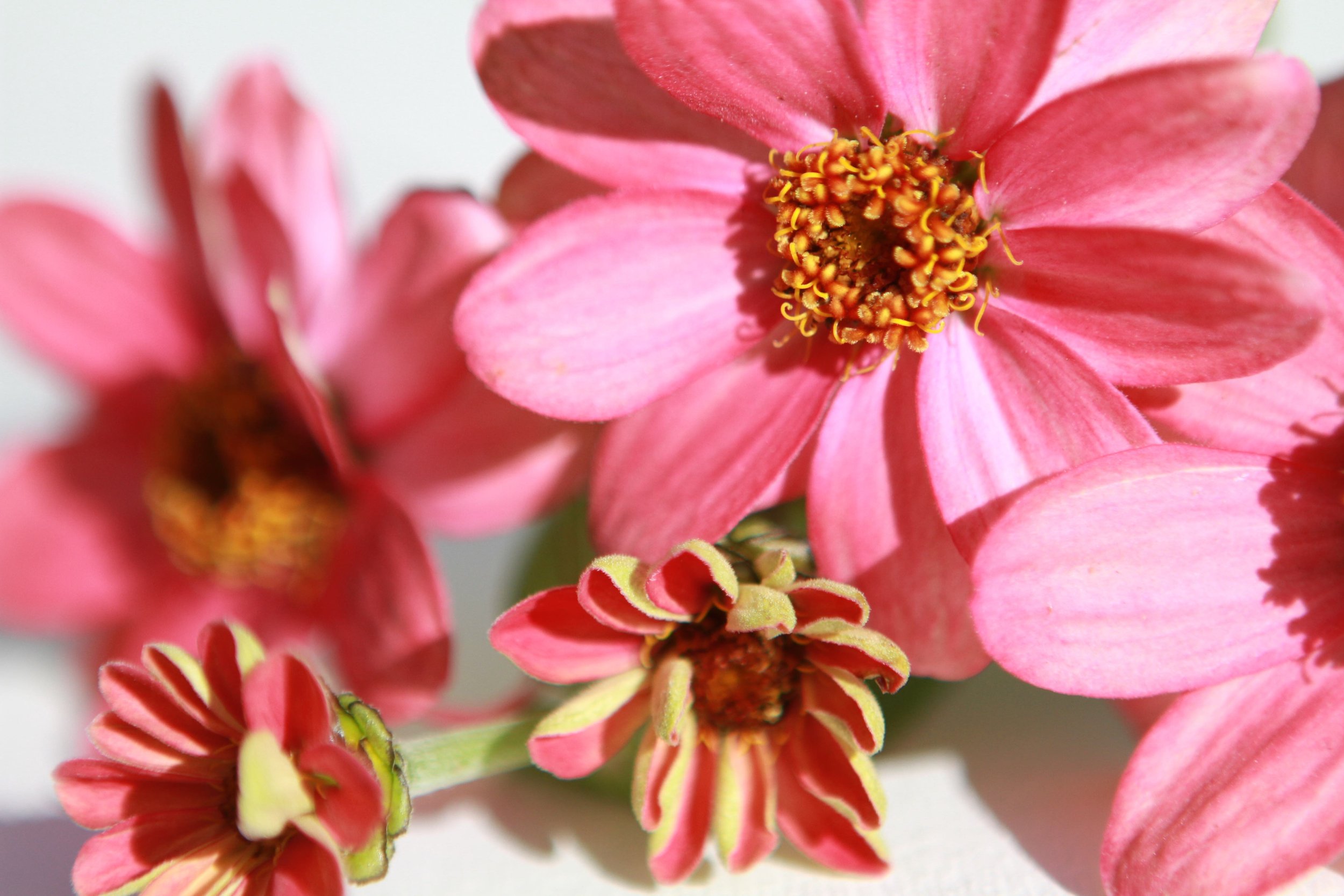Mindfulness Book Club: Jon Kabat-Zinn PART ONE
As we mentioned in our previous letter, we have been reading Wherever You Go, There You Are by Jon Kabat Zinn. We have developed four questions for Part One: The Bloom of the Present Moment (pages 1-100) which we have both answered in an informal Q&A.
This will be one of our longer letters because we want to delve a bit deeper into our understanding of what mindfulness is, so go grab yourself a cup of coffee or tea and read on! If you are reading the book too, please feel free to join our conversation in the comment section at the end of the letter. We are interested in what you are learning.
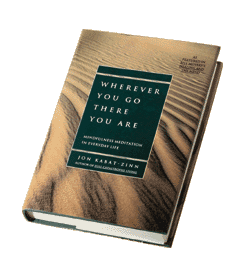 "This book maps out a simple path for cultivating mindfulness in one's own life. It speaks both to those coming to meditation for the first time, and to longtime practitioners, anyone who cares deeply about reclaiming the richness of his or her moments. Brief, humorful chapters full of stories and poetry, convey the heart and the spirit of mindfulness practice and encourage you to find your own ways to incorporate mindfulness into your life."
"This book maps out a simple path for cultivating mindfulness in one's own life. It speaks both to those coming to meditation for the first time, and to longtime practitioners, anyone who cares deeply about reclaiming the richness of his or her moments. Brief, humorful chapters full of stories and poetry, convey the heart and the spirit of mindfulness practice and encourage you to find your own ways to incorporate mindfulness into your life."
[wc_divider style="dashed" line="single" margin_top="" margin_bottom=""]
Mindfulness Book Club PART ONE: The Bloom of the Present Moment
Why are you meditating at this point in your life?
LAURA:
Meditation has been a journey for me. I first became curious about it for practical reasons while teaching art to 1-8th grade students. As a new teacher I was curious why some of my classes were so calm and others felt like they couldn’t sit still. I appreciated how many times they had to switch gears in one day. Some students were coming to class from lunch, others from gym, some were leaving a math problem or a book they were reading. I wanted to offer my students a creative place to pause, reflect and process their busy worlds.
We experimented with what I called “silent art”. After I introduced the lesson for the day I would put on calming music and we would have five minutes of quiet working time. It became a beautiful way for everyone to adjust to the abrupt changes and settle into themselves. This worked so nicely they often asked to keep working silently. It was like having permission to just “be” for a moment. Looking back, I see how I was intuitively craving this for myself.
As I switched gears from teaching to a full time art practice and new venture in entrepreneurship I found myself with feelings of overwhelm and endless to do lists. I wasn’t sleeping, I had trouble focusing, always felt on edge and was unable to find a peaceful place in my mind. I thought learning strategies for productivity would help and got lost in books and podcasts which only added to my anxiety, Ironically many of these books mentioned meditation as a tool for being more productive in a shorter amount of time. I loved this idea!
I started reading more on meditation, but It wasn’t until I tried Oprah & Deepak Chopra’s 21 Day Meditation Experiences that started I meditating more consistently. I have gained a lot through all of their teachings and have found skills in both mindfulness and meditation that are helping me live a more harmonious life. Simple things like pausing to notice how the trees are fluttering in the wind or appreciating the color and textures of the vegetables I am chopping for dinner quiets my mind and brings me peace.
TINA:
At this point in my life raising two teenage boys, maintaining a healthy marriage, teaching full time, and working in my studio as much as I can, my mind is often restless, worried, exhausted, and burned out. I need some strategies to keep things in perspective on the BIG picture. Big picture meaning living my values and making a happy life.
I have never meditated until recently. The only time I have encountered meditation has been through my yoga practice for the past fifteen years. During the time in savasana I have always struggled to keep my mind quiet and blank. I just can’t do it. Then I realized through reading this book that it’s not about keeping my mind quiet or blank. It’s about being aware in the moment. Being aware of all my thoughts is the first step. My yoga teacher has said many times that “we are divine spirits having a human experience”. I am finally understanding that these thoughts are simply a human response to events that unfold. If I can recognize it’s just a thought (my ego, unnecessary worry, etc) …..then I can let it go by like the clouds in the sky. I don’t have to get swept away with the thought.
This short video will explain what I now understand about meditation: “the ability to change my relationship with my passing thoughts and feelings will enable one to view them with more perspective.”
https://youtu.be/7xAeJKgupPI
What is a quote from the book that resonates with you?
LAURA:
This quote reminds me to come back to myself when I feel at ease:
“Dwelling in stillness and looking inward for some part of each day, we touch what is most real and reliable in ourselves and most easily overlooked and undeveloped. When we can be centered in ourselves, even for brief periods of time in the face of the pull of the outer world, not having to look elsewhere for something to fill us up or make us happy, we can be at home wherever we find ourselves, at peace with things as they are, moment by moment.”
TINA: The entire chapter “You Can’t Stop the Waves, but You Can Learn To Surf” (pages 30-32) is one I keep going back to.
“Meditation is neither shutting things out nor off. It is seeing things clearly, and deliberately positioning yourself differently in relationship to them”
I also appreciate that Jon goes back to our cultural greats like Henri Thoreau. “Thoreau would often sit in his doorway for hours and just watch, just listen, as the sun moved across the sky and the light and shadows changed imperceptibly….” (page 35). In this chapter he discusses non-doing and effortless activity. Laura, we often talk about looking and seeing in our daily lives which affects our artwork. I wonder if you would be interested in reading Walden Pond someday?
How are you incorporating the teachings in Part One in our life today?
LAURA:
One of the many things I am incorporating into my life from Part One is voluntary simplicity (pg.68). I am doing my best to intentionally do just one thing at a time. This is something I need to practice as I have had the mindset of “multi-tasking” for so long. Slowing down reminds me what’s most important and that I will never get it all done so I may as well enjoy the moment with greater ease.
Sometimes this means putting away all distractions while I am working, or on the phone with a friend. Other times it is something as silly as throwing a straw for my cat (yes, she actually plays “catch” with a straw!). This makes her SO unbelievably happy! Her joy brings me joy and lights up my heart. Jon says voluntary simplicity is “seeing less so I can see more, doing less so I can do more, acquiring less so I can have more” (p.69). I am learning that being present to one thing at a time invites peace into my day helps me not take life too seriously.
TINA:
I appreciate the chapter This Is It (pages 14-16). He discusses how meditation is not about creating a “desirable outcome for our efforts”. Yes, I have been led to this practice because I struggle to manage this full life and I am looking for an outcome of balance, and he says this is a valid reason to pick up the practice. However, “meditation is not about doing, it’s about being….when we understand that ‘this is it’, it allows us to let go of the past and the future and wake up to what we are now, in this moment”. (pg.14)
Usually once a day I will stop and say to myself “this is it”, observe my surroundings and pay attention to smells and physical sensations (breeze, cool air, the floor beneath me, tension in my body, etc).
“The flavor and sheer joy of non-doing are difficult for Americans to grasp because our culture places so much value on doing and on progress.” (pg. 38)
Did you try any of Jon Kabat-Zinn’s prompts he labels “Try This”? If so, what did you try?
LAURA:
The Chapter Vision (pg.75) resonated with me because I have always loved the idea that we can create our lives when we have a Vision for what we want it to look like. This requires doing some “inner work” and for me a lot of self-reflection. This isn’t something I feel you can do once and be done with it, it is something that is ongoing for me.
I took the time to go back to my “life vision” and values and asked myself if I was remembering to embody this vision in all the areas of my life. Meditation gives me guidance with this. It resets my mind and puts me back on track with who I wish to be in this world. It reminds me where I may need to pay a little more attention and re-adjust my sails.
“Renew thyself completely each day; do it again, and again, and forever again.”
~Chinese inscription cited by Thoreau in Walden
TINA:
I have been meditating every morning for ten minutes right after I wake up (I use Headspace). The house is quiet and I can catch my mind right before it starts writing the to-do list for the day. This dedicated time goes back to what I wrote above about ‘this is it’. Also, check out the TRY prompt on page 46. It speaks to a similar idea.
“Notice how if you can make some time early in the day for being, with no agenda, it can change the quality of the rest of your day.”
[wc_divider style="dashed" line="single" margin_top="" margin_bottom=""]
Other thoughts we are pondering from Part One...
Laura, say more about finding the joy in the present moment
For many years I worked three jobs, mostly because I believed this was what I was “supposed” to do to “get ahead”. I wanted nice clothes, a car, a house and a pretty garden. I valued paying my bills on time, going out with friends, giving gifts, saving money, and being surrounded by the things and people loved. I thought I was happy.
When I moved from NH to CT I found myself miserable when by the "norms" of society I should be blissful. I had just reunited and married my high school sweetheart and was totally in love, I sold my house for double what I paid for it, I applied for and got accepted to the graduate school of my choice and was allotted a sabbatical leave from my teaching position of 14 years to pursue my dream of being an artist, yet the twirl of negative thoughts about the unknown of the future overwhelmed me and made me miserable.
One day while painting I “heard” myself for the first time and felt blissfully at peace. I had the awareness of the beauty of the present moment and I was calm. I understood how I was twirling in thoughts of the past, regretting things I could not change, or worried about the future, which no one has any control of. This was HUGE for me! I now have strategies to help keep myself in check with the present moment. “Wherever You Go There You Are” is a great tool for this.
Tina, say more about your epiphany about the difference between meditation not being confused with positive thinking.
The chapter Meditation: Not to Be Confused with Positive Thinking really struck a chord with me. Of course I want to train my mind to think in a more generous, thoughtful, and positive manner. I don’t think many people will disagree that our species would be better off if we worked on our kindness muscle every day. My epiphany with understanding meditation is that it is not about control. If I am trying to change a worry, sadness, or anger into something positive that is simply more thinking, and not so much meditation. “Meditation does not involve trying to change your thinking by thinking some more. It involves watching thought itself. By watching your thoughts without being drawn into them, you can learn something profoundly liberating about thinking itself, which may help you to be less of a prisoner of those thought patterns….we can easily become a prisoner of so-called positive thinking as of negative thinking” (pg. 94)
I like the visual metaphor he describes on pages 94-95
“With meditation….we still see and hear the water, but we are out of the torrent.”
Now, here are some ideas that are kinda out there…..I am intrigued by the idea of our thoughts being limited because of our physical body and brain. Yes, we have consciousness- which is a gift, but is the only kind of consciousness? If we are just one species in the universe, is it possible that our brains and the thoughts that come out of it are confined to one way of being? What is beyond the limited perimeter of our minds? Perhaps our brains are not designed to understand what lies beyond so we can’t even imagine it. I can’t even understand infinity much less the limits of my own mind! But this philosophical idea brings me back to being a watcher of my thoughts rather than my thoughts being who I am. Then the next question is “who am I?”--> the biggest question our human species has asked for eons and what so many religions/spiritual practices attempt to answer. Good luck!
 We’d love to hear your thoughts on this conversation. What’s the most significant insight you’re taking away? Do you have other thoughts or resources on meditation and mindfulness? Let us know in the comments below.We appreciate you sharing your voice! Your thoughts and ideas contribute to our learning and understanding as well as others who are reading this. We all grow together :)
We’d love to hear your thoughts on this conversation. What’s the most significant insight you’re taking away? Do you have other thoughts or resources on meditation and mindfulness? Let us know in the comments below.We appreciate you sharing your voice! Your thoughts and ideas contribute to our learning and understanding as well as others who are reading this. We all grow together :)
Thank you!
PART TWO: The Heart of Practice
PART THREE: In the Spirit of Mindfulness
p.s. Want to know when we have new posts?
Join our monthly newsletter HERE

